Vladimir Putin: 20 years in 20 photos
 Getty Images
Getty ImagesVladimir Putin is about to mark 20 years of leading his country as president and prime minister, navigating geopolitical crises and major sporting events.
Bill Clinton was in the White House when the former KGB agent first became Russia's president on 31 December 1999. In the 20 years since, there have been three more US presidents and five UK prime ministers.
From global conflicts and domestic scandals to sporting triumphs and propaganda photos, we look at the images that define Mr Putin's two decades in power.
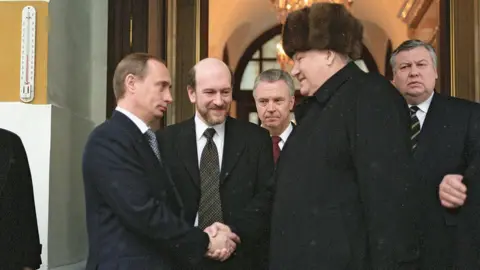 Getty Images
Getty ImagesThe former KGB officer had already been appointed prime minister when Russia launched the second Chechen war in October 1999, in response to a series of deadly bombings on apartment blocks.
The start of his presidency was shaped by the conflict in Russia's restive southern republic. Russian forces besieged the Chechen capital, Grozny. In 2003, the UN described Grozny as the most destroyed city on Earth in the wake of the siege.
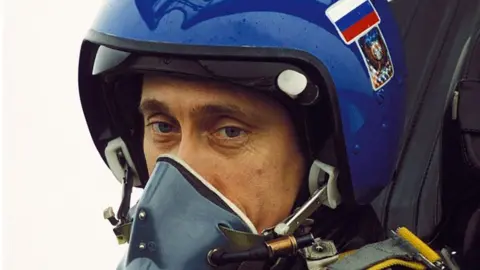 Getty Images
Getty ImagesFor years Russia was hit by militants attacks such as the 2004 Beslan school siege in which 330 people died, most of them children.
President Putin did not officially end combat missions in Chechnya until 2009.
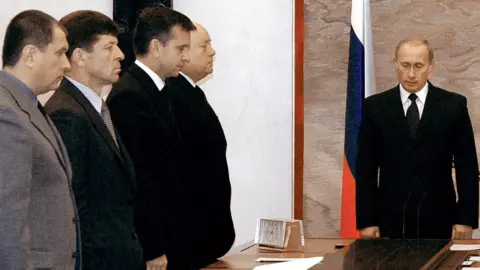 AFP/Getty
AFP/GettyMr Putin was confirmed in office in presidential elections in March 2000, and within months was at the centre of a PR crisis.
The Kursk submarine disaster left 118 crew members dead.
 ITAR-TASS/AFP via Getty Images
ITAR-TASS/AFP via Getty ImagesWhen the Kursk sank in August 2000, it took days for Russia to inform relatives and the president initially did not return home from his Black Sea holiday.
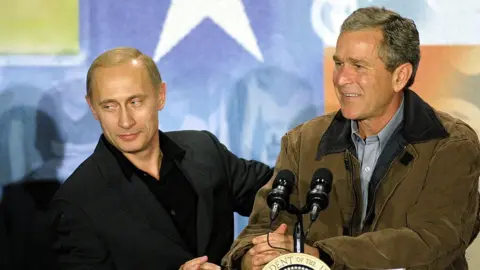 Getty Images
Getty ImagesIn his first decade in office, Vladimir Putin was on generally good terms with Western leaders despite his criticism of their foreign policy,
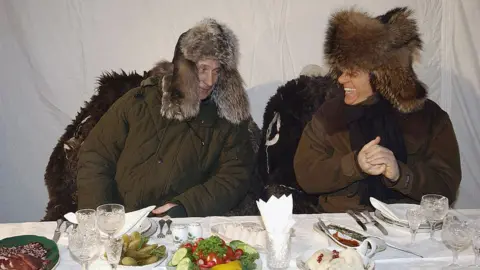 ITAR-TASS/AFP via Getty Images
ITAR-TASS/AFP via Getty Images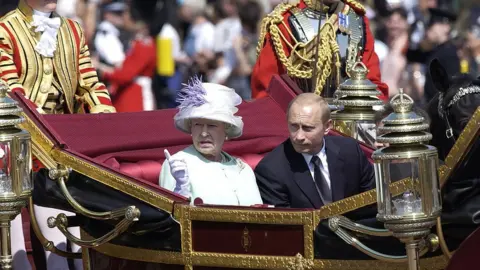 Getty Images
Getty ImagesRussia hosted its first G8 summit in 2006, confirming its membership of the economic group.
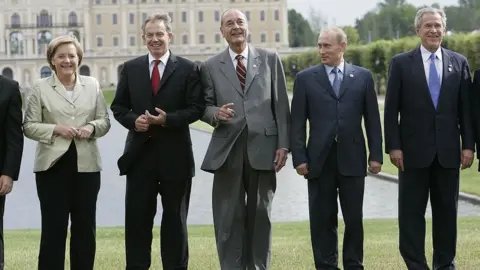 Getty Images
Getty ImagesUnder Russia's constitution, Mr Putin could not stay on as president for a third consecutive term, so in 2008 became prime minister for four years.
Few saw President Dmitry Medvedev as anything more than a Putin protege standing in for his boss.
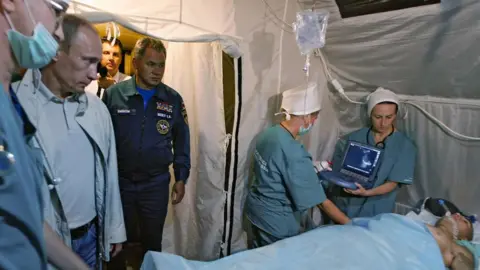 Getty Images
Getty ImagesWhen Georgia sent its forces to regain control of the breakaway region of South Ossetia in 2008, Russia invaded deep into Georgia.
The brief, August war was an alarm call to the West, but it was Russia's move into eastern Ukraine in 2014 that turned Mr Putin's relations with Western leaders sour.
Russia's seizure and annexation of Crimea from Ukraine prompted EU and US sanctions and brought a suspension of its membership of the G8.
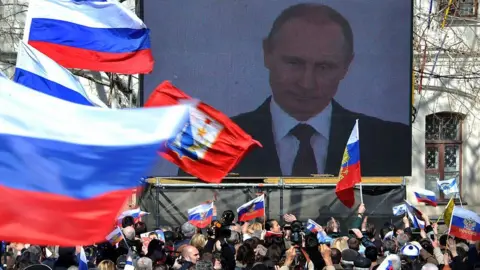 AFP/Getty
AFP/Getty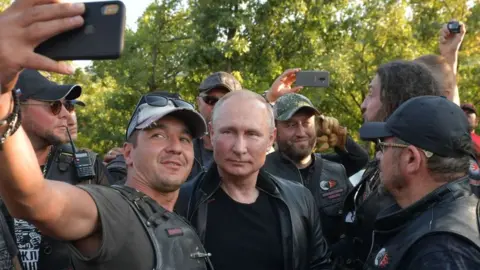 AFP/Getty
AFP/Getty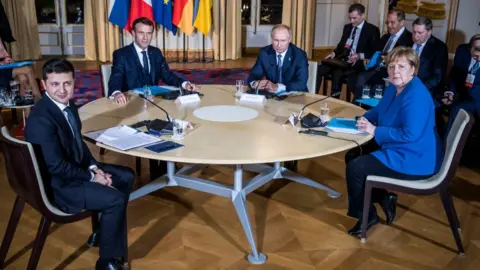 Getty Images
Getty ImagesFour years into the Syrian civil war, Russia intervened to back its ally, President Bashar al-Assad, whose government was on the brink of collapse. Mr Putin's decision to send in Russian planes and armour changed the balance of power on the ground.
 TASS/Getty
TASS/GettyAfter Donald Trump's victory in the US presidential election in 2016, US intelligence services concluded that Russia had interfered in the campaign.
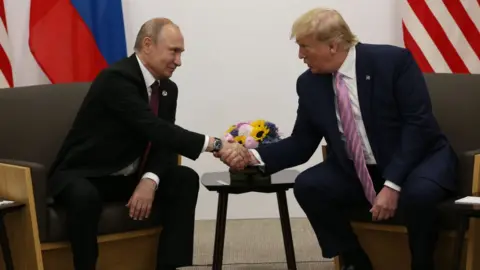 Getty Images
Getty ImagesAnd in 2018, the UK accused Russia of poisoning its former military intelligence officer Sergei Skripal in Salisbury.
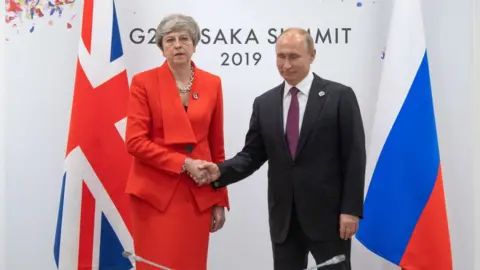 Getty Images
Getty ImagesThroughout his time in office the Russian president has sought to control his image and that of his country. A number of photos released by the leader over the years have tried to show him as a strong man.
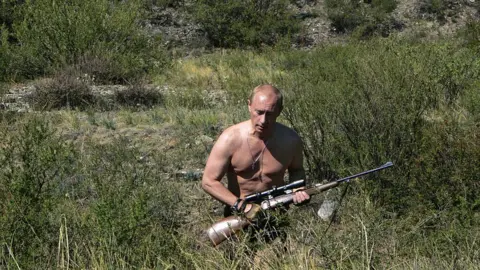 AFP/Getty
AFP/Getty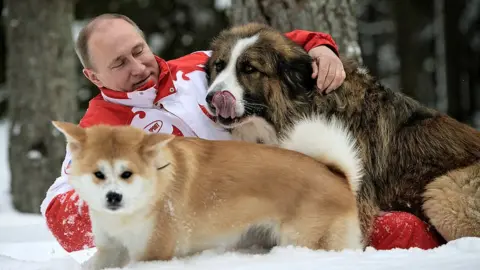 Getty Images
Getty Images Getty Images
Getty ImagesHe has also sought to boost Russia's sporting profile by hosting the Winter Olympics in 2014 and the World Cup in 2018.
The Sochi Games were a success but the repercussions of a doping scandal continue to be felt.
The World Anti-Doping Agency handed Russia a four year ban from all major sports event last week. A 2015 report said Russia had operated what amounted to a state-sponsored doping programme in track and field athletics. This month it was found to have tampered with laboratory data provided in January.
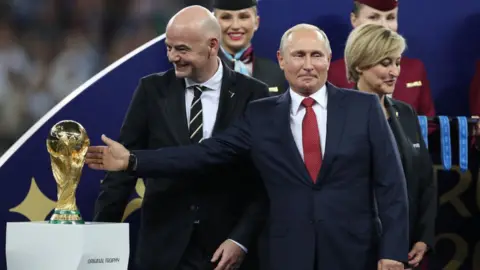 Getty Images
Getty ImagesWhile the 2018 Fifa World Cup was an international success, the doping scandal means Russia will not be able to take part in the next competition, in Qatar in 2022.
All photos subject to copyright.
